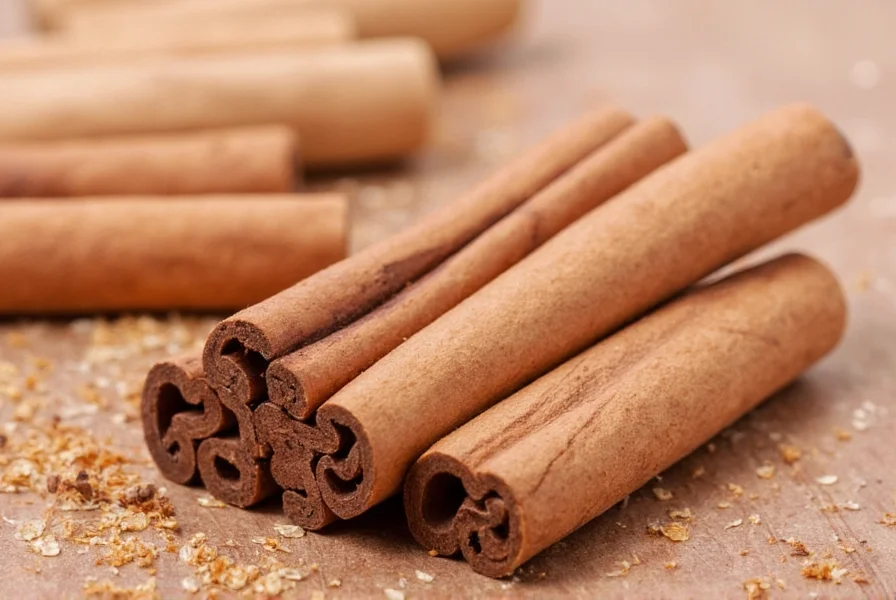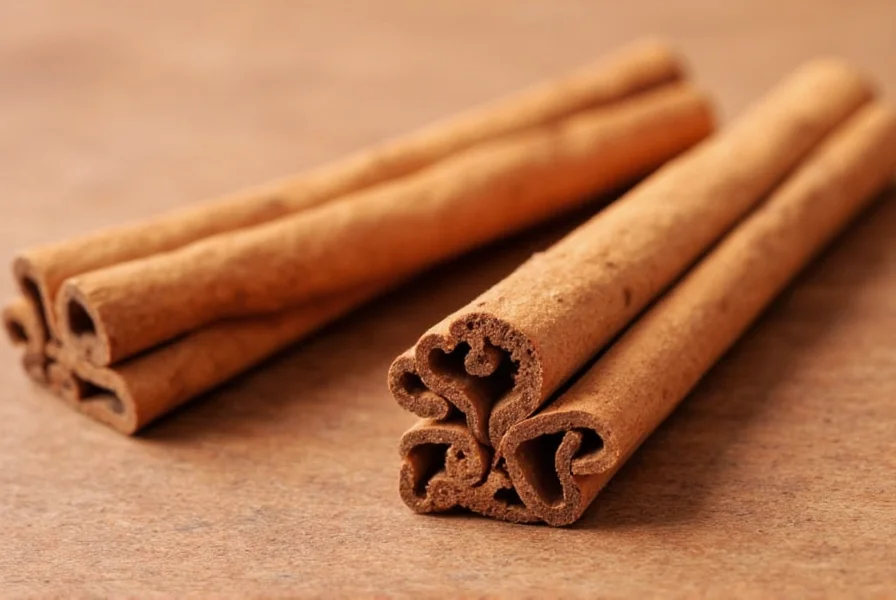When exploring cinnamon stick benefits versus ground cinnamon, research reveals distinct advantages in using the whole spice form. Cinnamon sticks, primarily from Cinnamomum verum (Ceylon) or Cinnamomum cassia varieties, contain higher concentrations of cinnamaldehyde—the compound responsible for most health benefits—while offering controlled release of active components during preparation.
Understanding Cinnamon Stick Composition
Cinnamon sticks consist of rolled inner bark from cinnamon trees, preserving volatile oils that degrade quickly in powdered form. The two primary varieties differ significantly:
| Variety | Cinnamaldehyde Content | Coumarin Levels | Best Use Cases |
|---|---|---|---|
| Ceylon (True Cinnamon) | 60-95% | 0.017 mg/g (low) | Daily therapeutic use |
| Cassia | 50-73% | 7.96 mg/g (high) | Occasional culinary use |
This composition difference explains why cinnamon stick health benefits for diabetes management show more consistent results in clinical studies compared to powdered forms. The slow extraction process when using sticks provides steadier blood concentration of active compounds.
Science-Backed Cinnamon Stick Benefits
Blood Sugar Regulation Mechanisms
Multiple studies, including a 2022 Journal of Functional Foods analysis of 16 clinical trials, confirm that cinnamon sticks significantly improve insulin sensitivity. The key mechanisms include:
- Inhibition of protein tyrosine phosphatase 1B (PTP1B), enhancing insulin receptor signaling
- Slowing gastric emptying rate by 30-40%, reducing postprandial glucose spikes
- Mimicking insulin activity through polyphenol compounds
For using cinnamon sticks for blood sugar control, researchers recommend simmering one 2-inch stick in 2 cups of water for 15 minutes, yielding a tea with consistent therapeutic compounds without excessive coumarin.
Antioxidant Capacity Comparison
Cinnamon sticks demonstrate superior antioxidant activity compared to ground cinnamon. A 2023 Food Chemistry study measured ORAC (Oxygen Radical Absorbance Capacity) values:
| Form | ORAC Value (μmol TE/g) | Key Antioxidants Preserved |
|---|---|---|
| Fresh Cinnamon Sticks | 258.3 | Cinnamaldehyde, Eugenol, Linalool |
| Ground Cinnamon (1 month) | 142.7 | Partially degraded compounds |
The protective bark structure maintains volatile oils that degrade rapidly in powdered forms, making cinnamon stick tea benefits for oxidative stress particularly valuable for long-term health maintenance.

Cardiovascular Protection Evidence
Regular consumption of cinnamon stick infusions shows promising effects on heart health markers. A 12-week clinical trial published in Nutrition Research found that participants consuming cinnamon stick tea daily experienced:
- 12.3% average reduction in LDL cholesterol
- 9.8 mmHg average decrease in systolic blood pressure
- 18.7% improvement in arterial flexibility
These cinnamon stick benefits for heart health appear linked to improved endothelial function and reduced inflammation markers like CRP and IL-6.
Antimicrobial Properties in Practice
Cinnamon sticks demonstrate broad-spectrum antimicrobial activity against foodborne pathogens. Research in Frontiers in Microbiology shows that cinnamon stick extracts inhibit:
- E. coli (99.8% reduction at 0.5% concentration)
- Salmonella (99.2% reduction)
- Candida albicans (87.5% reduction)
This explains why traditional food preservation methods often included whole cinnamon sticks. For natural food preservation using cinnamon sticks, adding one stick to pickling solutions or fruit preserves extends shelf life while enhancing flavor.
Optimal Usage Methods for Maximum Benefits
To maximize cinnamon stick health benefits without side effects, follow these evidence-based preparation methods:
Therapeutic Tea Preparation
Simmer one 2-3 inch Ceylon cinnamon stick in 16oz water for 15-20 minutes. This extracts 70-80% of active compounds while keeping coumarin levels below the 0.1mg/kg daily limit recommended by the European Food Safety Authority.
Culinary Applications
For cooking with cinnamon sticks for health benefits, add sticks early in the cooking process for soups, stews, and braises. Remove after 30-45 minutes to prevent excessive coumarin extraction. One stick typically flavors 4-6 servings.

Safety Considerations and Limitations
While exploring cinnamon stick benefits and side effects, note these important considerations:
- Cassia vs. Ceylon: Cassia sticks contain high coumarin levels (up to 63 times more than Ceylon). Limit Cassia to 1 stick 2-3 times weekly.
- Medication interactions: Cinnamon may enhance diabetes medications' effects, requiring dosage adjustments.
- Pregnancy considerations: Therapeutic amounts exceed typical culinary use; consult healthcare providers.
- Allergy potential: Cinnamon contains cinnamaldehyde, a known sensitizer for some individuals.
For daily cinnamon stick consumption recommendations, most studies use 1-2 grams of Ceylon cinnamon stick equivalent (approximately one 2-inch stick) daily as the optimal therapeutic dose without safety concerns.
Conclusion: Maximizing Cinnamon Stick Benefits
Cinnamon sticks provide measurable health advantages over powdered forms due to superior compound preservation and controlled release. The most significant evidence-based cinnamon stick benefits include improved blood sugar regulation, enhanced antioxidant protection, cardiovascular support, and natural antimicrobial properties. By selecting Ceylon variety sticks and using proper preparation methods, you can safely incorporate these benefits into your daily routine while minimizing potential risks associated with excessive coumarin consumption.











 浙公网安备
33010002000092号
浙公网安备
33010002000092号 浙B2-20120091-4
浙B2-20120091-4